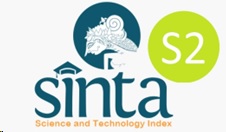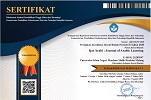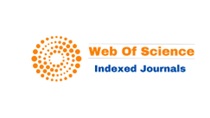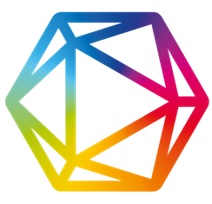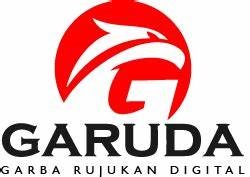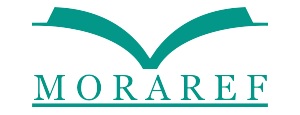Development Of Arabic Gramatica Book With The Concept Map Of Tony Buzan Model/ تطوير كتاب متممة الآجرومية باستخدام خريطة المفاهيم على نموذج توني بوزان
Abstract
Nahwu or Arabic gramatica is difficult for students. This study focuses on the Mutammam al-Ajrūmiyyah, an Arabic grammatical book popular in Indonesia. This study aims for three purposes: the development of the Mutammimah Al-Ajramiyah book using the Tony Buzan model, concept map, and describing the results of expert validation of the validity of the Mutammimah Al-Ajurumiyah book using the Tony Buzan concept map model, and knowing the effectiveness of using the Mutammimah Al-Ajurumiyah book using the Tony Buzan model concept map. The researcher used the Borg and Gall development approach, which was summarized into data analysis, information gathering, planning, development, expert validation, revision, field experiment, and final product. The samples in this study were fourth-grade students of the Anwar Huda Islamic boarding school in Malang, Indonesia and nahwu teachers in that class. The data in this study consisted of two types: quantitative data and qualitative data, and the methods of collection were interviews, observations, questionnaires, and exam tests. The results of this development are (1) the Mutamimmah al-Ajurumiyah book with a concept map of the Tony Buzan model, which consists of eight subjects, as well as Indonesian translations, tables, and practice questions, (2) the results of the validation of subject matter experts get 87%. Concept map experts obtained 64%. and the results of the media expert validation got 66%, (3) the Paired samples test results obtained a significant value of p = 0.000 <0.05, which indicates that there is a significant difference between the pre-test and post-test scores on the test scores, meaning that the student's test scores increased significantly after using the developed book.
Keywords
Full Text:
PDFReferences
Al-‘Atiqah, Farhah. (2019). Tathwir al-kitab “al-amsilah at-tasrifiyyah” lil syaih al-‘alamah Muhammad ma’sum bin ali ‘ala asas kharithah al-mafahim wa an-naht. Semnasbama, 3, 229-242.
Al-Farisi, Z. (2011). Pedoman Penerjemahan Arab Indonesia. Bandung: Remaja Rosdakarya, 2011.
Al-Ghalayaini, Musthafa. (2012). Jami’ ad-Durus al-‘Arabiyyah. Qahirah: Al-Qads.
Al-Ghali, N.A. (1991). Asas I’dad al-Kitab at-Ta’limiyyah li Ghair an-Nathiqin Biha. Riyadh: Dar al-Ghali.
Al-Hasyimi, A. (2018). Al-Qawaid Al-Asasiyyah Lil Lughah Al-Arabiyyah (8th ed.). Beirut - Libanon: Dar Al-Kutub Al-Islamiyah.
Aliyah. (2018). Pesantren Tradisional Sebagai Basis Pembelajaran Nahwu dan Sharaf dengan Menggunakan Kitab Kuning. 6 (1). AL-TA’RIF Jurnal Pendidikan Bahasa Arab dan Kebahasaaraban.
Al-khudhari, M.M.H. (2019). Hasyyah al-Khudhari ‘ala Syarh Ibn ‘Aqil ‘ala alfiyah Ibn Malik. Bairut: Dar al-Kutub al-‘Ilmiyyah.
Almuflihatin siti imaniyah.(2012).Istihdam Istiratijiyyah Kharaid Al mafahim (mind mapping) fi Ta’lim Maharah Al Qiraah fi Al Madrasah Atsanawiyah Alhukumiyah bi Malang. UIN Malik Ibrahim Malang.
An-Naqah, M.K. (1980). Al-Kitab al-Asas li Ta’lim al-Lughah al-‘Arabiyyah li Nathiqin bi Lughat ukhra. Makah al-Mukaramah. Jami’ah um al-Qura.
An-Naqah. M.K. (1985). Ta’lim al-Lughah al-‘Arabiyyah li Nathiqin bi Lughah Ukhra “Asasuhu-Mudakhaluhu-Thuruq Tadrisihi. Makah al-Mukaramah: Jami’ah Um al-Qura Ma’had al-Lughah al-‘Arabiyyah Wihdah al-Buhus wa al-Manahij.
Bassnett-McGuire, Susan. (1980). Translation Studies. London: Methuen & Co. Ltd.
Buzan, T. (2012). Buku pintar mind map. Jakarta: Gramedia Pustaka Utama.
Catford, J.C. (1978). A Linguistic Theory of Translation. Oxford: Oxford University Press.
Dahar Ratna Wilis. 2006. Teori-Teori Belajar & Pembelajaran. Jakarta:Erlangga
Fatimah. (2017). Fa’aliyah Tadwir Kitab Matan Al-Jurumiyah ‘ala Syakli Kharaid AL-Mafahimi. 5 (1). AT-TADRIS.
Fujiawati, F. S.( 2016). Pemahaman Konsep Kurikulum dan Pembelajaran dengan Peta Konsep Bagi Mahasiswa Pendidikan Seni. Jurnal Pendidikan Dan Kajian Seni, 1(1), 16–28.
Gall, M. D., Gall, J. P., & Borg, W. R. (2007). Educational Research: An Introduction. Retrieved from https://books.google.co.id/books?id=3fsUSgAACAAJ
Gunawan, R. (2018). Tathwir Kitaa al Shorf al Kailaniy fi Khorithoh al Mafaahiim Mind Mapping bi Ma’had Daar al Lughoh wa al Dirosaat al Islamiyyah Pamekasan Madura. Jurnal Al Bayan: Jurnal Jurusan Pendidikan Bahasa Arab, 10(2), 216–223.
Habibah, N. (2016). Lingkungan Artifisial Dalam Pembelajaran Bahasa Arab. Arabiyat : Jurnal Pendidikan Bahasa Arab Dan Kebahasaaraban, 3(2), 173–196. https://doi.org/10.15408/a.v3i2.4038
Haq, M. K. J. (2015). Sistem pendidikan pondok pesantren dalam meningkatkan life skills santri: Studi kasus Pondok Pesantren Anwarul Huda Karang Besuki Malang. Universitas Islam Negeri Maulana Malik Ibrahim.
Hasan, Al-Jailali.L & Fauzi. (2014). Ahmiyah al-Kitab al-Madrasah fi al-‘Amaliyyah at-Tarbawiyyah. Majalah ad-Dirasiyat wa al-Buhus al-Ijtima’iyyah (6) 2.
Huda, N. F. (2020). Penggunaan Media Pembelajaran Spinning Wheel dalam Pembelajaran Qawa> id Nahwu. Lisanan Arabiya: Jurnal Pendidikan Bahasa Arab, 4(2), 155–174.
Ibrahim, M, A. (2004). Istiratijiyat at-ta’lim wa asalib at-ta’lim. Qahirah: maktabah al-anjalu misriyyah.
Ismail, M. (2011). Pesantren dan perubahan sosial. The Sociology of Islam, 1(1).
Ismail, M. (2011). Pesantren dan perubahan sosial. The Sociology of Islam, 1(1).
Larson, M.L. (1984). Meaning-Based Translation: A Guaide to Cross-Language Equivalence. Lanham: Universitas Press of Amerika.
Mansur, M.A. (2006). At-Tarjamah baina an-Nadhariyyah wa at-Tathbiq: Mabadi` wa Nushus wa Qamus li mushthalahat al-Islamiyyah. Qahirah: Dar al-Kamal.
Mardhotillah, F. R. M. (2021). Penerapan Metode Sorogan Sebagai Upaya Meningkatkan Pemahaman Gramatikal Bahasa Arab. Semnasbama, 5, 53–60.
Murti, S. (2015).Eksistensi Penggunaan Bahasa Indonesia Di Era Global. Dalam Prosiding Seminar Nasional Bulan Bahasa UNIB, Hal. 177.
Muslim, B., & Junita, R. (2017). Tathwir Kitab At-Tashrif li Hasan bin Ahmad bi Istikhdami Aj-Jadawul. LISANUNA: Jurnal Ilmu Bahasa Arab Dan Pembelajarannya, 6(2), 253–273.
Muslim, Buhori & Junita. Rika. (2016). Tathwir Kitab At-Tashrif li Hasan bin Ahmad bi Istikhdami Aj-Jadawul. 6 (2). LISANUNA.
Mustofa, N. H. (2020). Development of the Book “Mutammimah Ajurumiyah” Based on Structural Theory To Improve Grammatical Competence. Abjadia, 5(1), 79. https://doi.org/10.18860/abj.v5i1.9009
Nida, E. A., & Taber, C. R. (1982). The theory and practice of translation (Vol. 8). Brill Archive.
Ningsih, W. P. (2018). تطوير الكتاب التعليمي لمهارة الكلام بالخريطة الذهنية. Al-Irfan: Journal of Arabic Literature and Islamic Studies, 1(1), 35–72.
Novak, J. D., Gowin, D. B., & Bob, G. D. (1984). Learning how to learn. cambridge University press.
Novak, Joseph & Gowin, Bob. (1995). Learning how to Learn. Translation: Ahmed Safadi, Ibrahim Al-Shafei. Riyadh: King Saud University Press.
Nurhawani, J. (2019). أسلوب الخريطة العقليةوتطبيقها على تعليم النحو. JL3T (Journal of Linguistics Literature and Language Teaching), 5(2), 174–193.
Pinchuck, Isadore. (1977). Scientific and Technical Translation. London: W & Y Mackay Liraited, Chatham.
Saraya, A. (2007). Educational Design and Meaningful Learning, 2. Dar Al Awael for Publishing and Distribution, Amman.
Savory. 1968. The Art of Translation. London: Jonathan Cope.
Sugiono. (2015). Metode Penelitian Pendidikan. Bandung: Alfabeta
Sukmadimata, Nana Syaodih. 2011. Metode Penelitian Pendidikan. Bandung: Rosdakarya.
Swadarma, Doni. (2013). Penerpan Mind Mapping dalam Kurikulum Pembelajaran. Jakarta: Gramedia.
Zaenuddin, R. (2012). Pembelajaran nahwu/sharaf dan implikasinya terhadap membaca dan memahami literatur Bahasa Arab kontemporer pada santri pesantren Majlis Tarbiyatul Mubtadi-ien (MTM) Desa Kempek Kecamatan Gempol Kabupaten Cirebon. Holistik, 13(1).
DOI: https://doi.org/10.18860/ijazarabi.v5i1.14149
Refbacks
- There are currently no refbacks.
Copyright (c) 2022 Ahmad Jaunanto, Imam Asrori, Moh Khasairi
License URL: https://creativecommons.org/licenses/by-sa/4.0/





